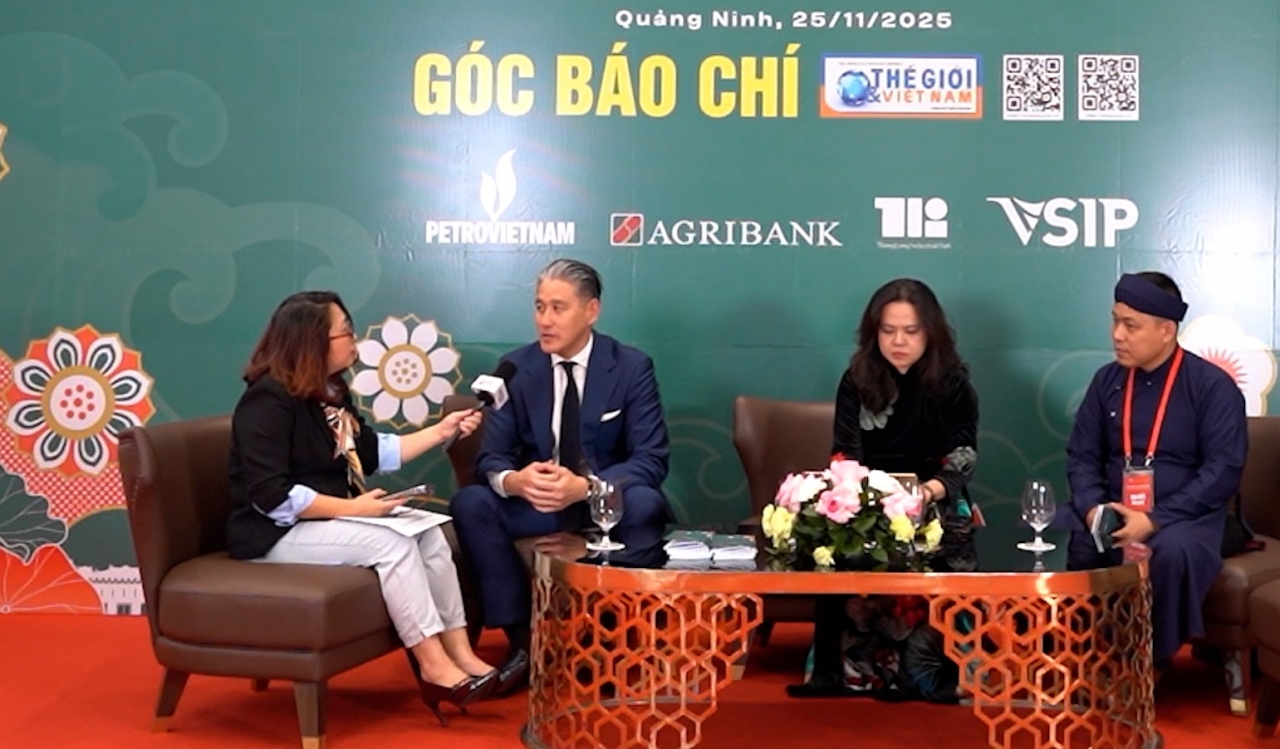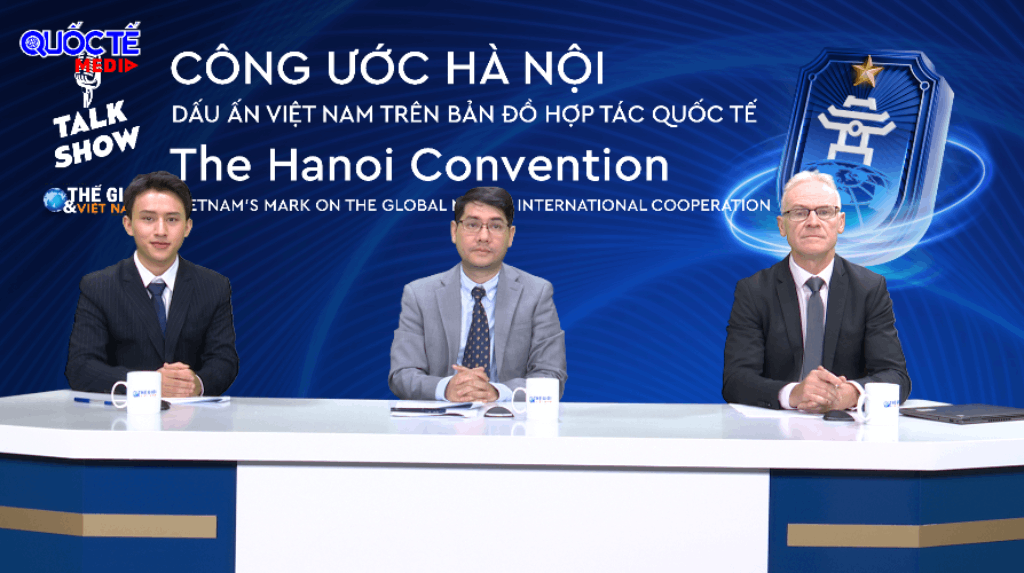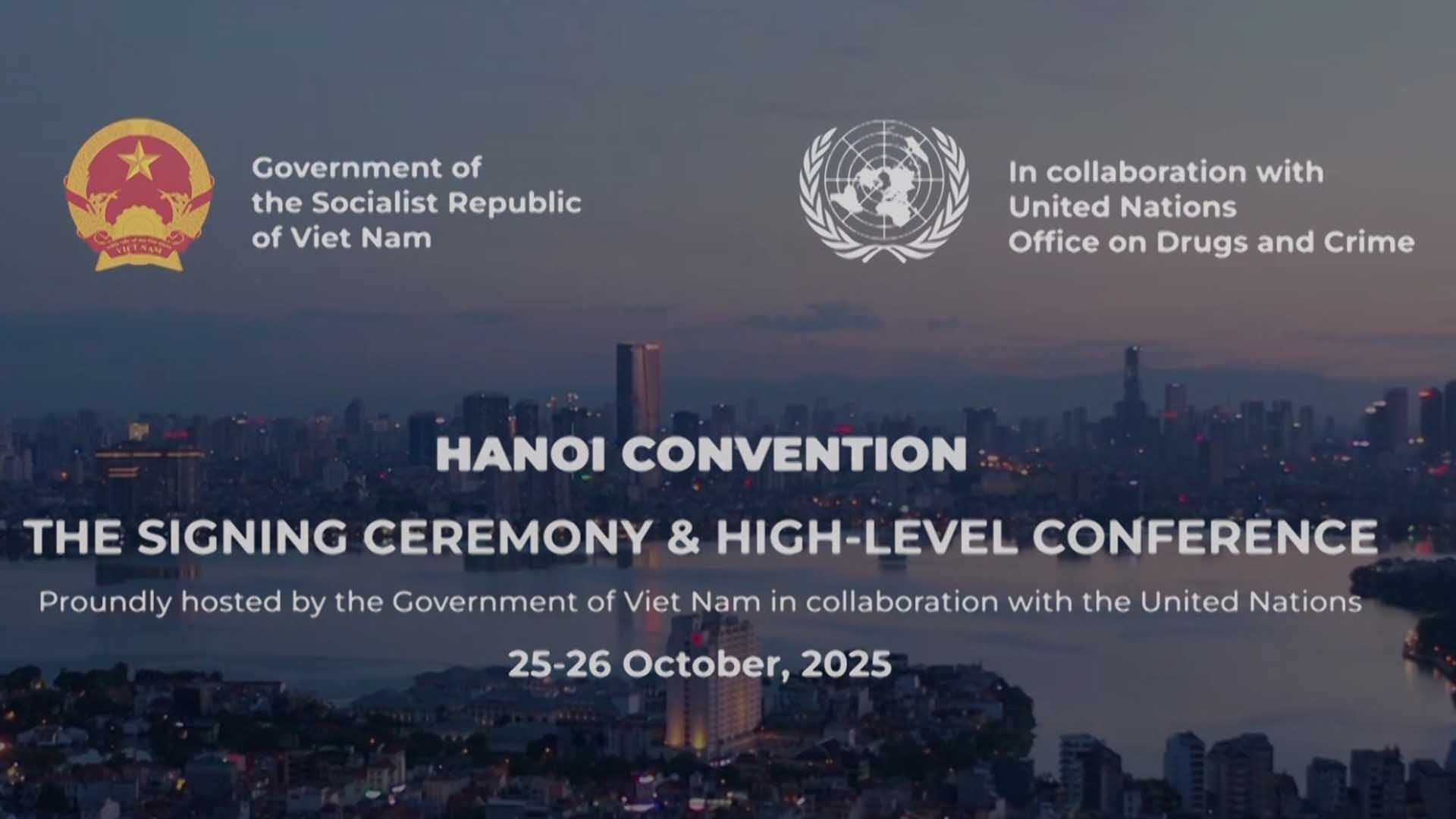
P4G Vietnam Summit 2025: A catalyst for resource mobilization
Latest
 |
| Mr. Tim Evans, CEO of HSBC Vietnam. (Photo: HSBC Vietnam) |
Recently, Vietnam’s Government has put multi-dimensional efforts in keeping up with technology advancement and climate change fight. This is exemplified by the two national strategies: ‘National Strategy on Digital Economy and Digital Society Development by 2025 with a vision toward 2030’ and ‘National Green Growth Strategy for the 2021-2030 period, with a vision towards 2050’. What’s your view on this transformation of Vietnam?
“Dual transition – digital transformation and green transition” has become a strategic growth trend in many countries, helping them move towards and make the most of the benefits from this dual transition. It is key to helping reduce risk and stay relevant in a rapidly evolving world.
Vietnam has emerged as the most active country in Asia in this space if not the world, when it comes to keeping up with this trend, and as a result, has taken digital transformation and green transition as important growth drivers for the economy. The government’s commitment in this space will be key to driving the country’s digital and green agenda.
Besides, Vietnam benefits from conducive conditions to implement this dual transition. Its demographic tailwinds include a population of over 100 million, a work force that is nearly 70% of the total population, almost 80% of Vietnam’s population using the internet, smartphone ownership has doubled compared to a decade ago.
All of these have contributed to opening up a huge potential for digital consumption in Vietnam, which is among the fastest-growing in ASEAN with impressive growth rate of 16% per annum, according to the e-Conomy SEA 2024 report. If one measures by gross merchandise value (GMV), the country has the potential to become the second-largest digital market in the region by 2030.
| More from WVR |
 Press Conference on P4G Summit 2025: Affirming Vietnam’s Commitment to the Green Transition Press Conference on P4G Summit 2025: Affirming Vietnam’s Commitment to the Green Transition |
Vietnam's renewable energy potential is also very significant. As the most naturally suited country in Southeast Asia to develop wind and solar energy, Vietnam already ranks 2nd among developing countries in attracting FDI into the renewable energy space.
It is encouraging to see businesses rewiring their organisations and deploying technology integration at scale in response to the government’s effort. As of 2023, 47% of businesses in Vietnam have undergone some kind of digital transformation, according to the Enterprise Development Agency (MPI). They have also started working out their own net zero transition plans. The awareness of local businesses has been rising over the past few years. Net zero transition was said to be critical by 48.7% of businesses in a 2024 survey by the Vietnamese Government’s Private Economic Development Research Board.
This year will mark a key milestone as Vietnam should achieve a lot of important goals in its dual transition, including the digital economy accounting for 25% of GDP and green credit accounting for 10% of total outstanding debts. Let’s see how far it will go with its ambitions.
As you mentioned earlier, Vietnam has become one of the leading countries in SEA in renewable energy, particularly in solar power and wind power. Beside renewables, what are other advantages Vietnam holds?
While semiconductor and artificial intelligence (AI) are currently two top sectors globally, Vietnam is aiming for a key role in the global high tech supply chain and the innovation ecosystem. The government is ramping up its effort to accelerate the local AI and semiconductor industries, exemplified by Prime Minister Pham Minh Chinh’s Decision No. 1018/QD-TTg, dated 21 September 2024, outlining the country’s semiconductor strategy until 2030, with a vision extending to 2050 with a focus on talent development, manufacturing capacity, and global integration, ensuring that Vietnam capitalises on its geopolitical and economic advantages.
Vietnam also has the National Strategy on Research, Development, and Application of Artificial Intelligence to 2030, introduced in 2021, outlines a phased approach: research, development, and large-scale application. This strategy aims to position Vietnam as a leading AI innovation hub in ASEAN by 2030.
Vietnam does walk the talk, delivering its strategy to realise its high tech ambition. Most recently, the government has approved a 12.8 trillion VND (USD500 million) investment to establish Vietnam’s first high-tech semiconductor fabrication plant, marking a bold step in boosting its chip research, manufacturing, and tech power.
And the S-shaped country is not alone on this journey. Vietnam has successfully expanded its important cooperative relationships with many major partners around the world. For example, recently, Vietnam upgraded its relationship to a Comprehensive Strategic Partnership, thereby boosting the momentum for global semiconductor giants to expand their operations in Vietnam. The country is also actively working with Korea, Japan, Taiwan (China) and Europe in driving its high tech agenda.
Remarkably, it has inked a deal with NVIDIA to establish an AI research and development centre and an AI data centre in Vietnam. More encouragingly, Vietnam’s largest tech groups like FPT, Viettel or VNPT consider semiconductors and/or AI among their top priorities, contributing to the government’s collective goal.
Beside high tech potential, Vietnam is also a key player in global agriculture. In 2023, the World Economic Forum (WEF) selected Vietnam as one of the first three countries to pilot the Food Innovation Hub, a flagship initiative of the Food Action Alliance designed to improve sustainability in food production. Also, Vietnam’s Government has put a lot of effort in promoting agriculture, placing it under the global spotlight.
In addition, Vietnam’s 16 Free Trade Agreements (FTAs) along with a few others under negotiation have paved the path for its agriculture exports. Taking the EU-Vietnam Free Trade Agreement (EVFTA) as an example, this FTA has helped Vietnam eliminate up to 94% of tax lines for fruits and vegetables, creating a competitive advantage over Thailand and China. Specifically for rice, the preferential tariffs from EVFTA have benefited Vietnam compared to countries like Cambodia, Thailand and India. Vietnam has now become one of the largest sources of cashew nuts and coffee for the EU.
As a key pillar in the Vietnamese economy, agriculture has experienced momentous transformations over the past few years. With a strong commitment from the government and the multiple signed FTAs, the opportunities in the agriculture sector are enormous. We hope it continues to be a beacon for Vietnam’s GDP growth.
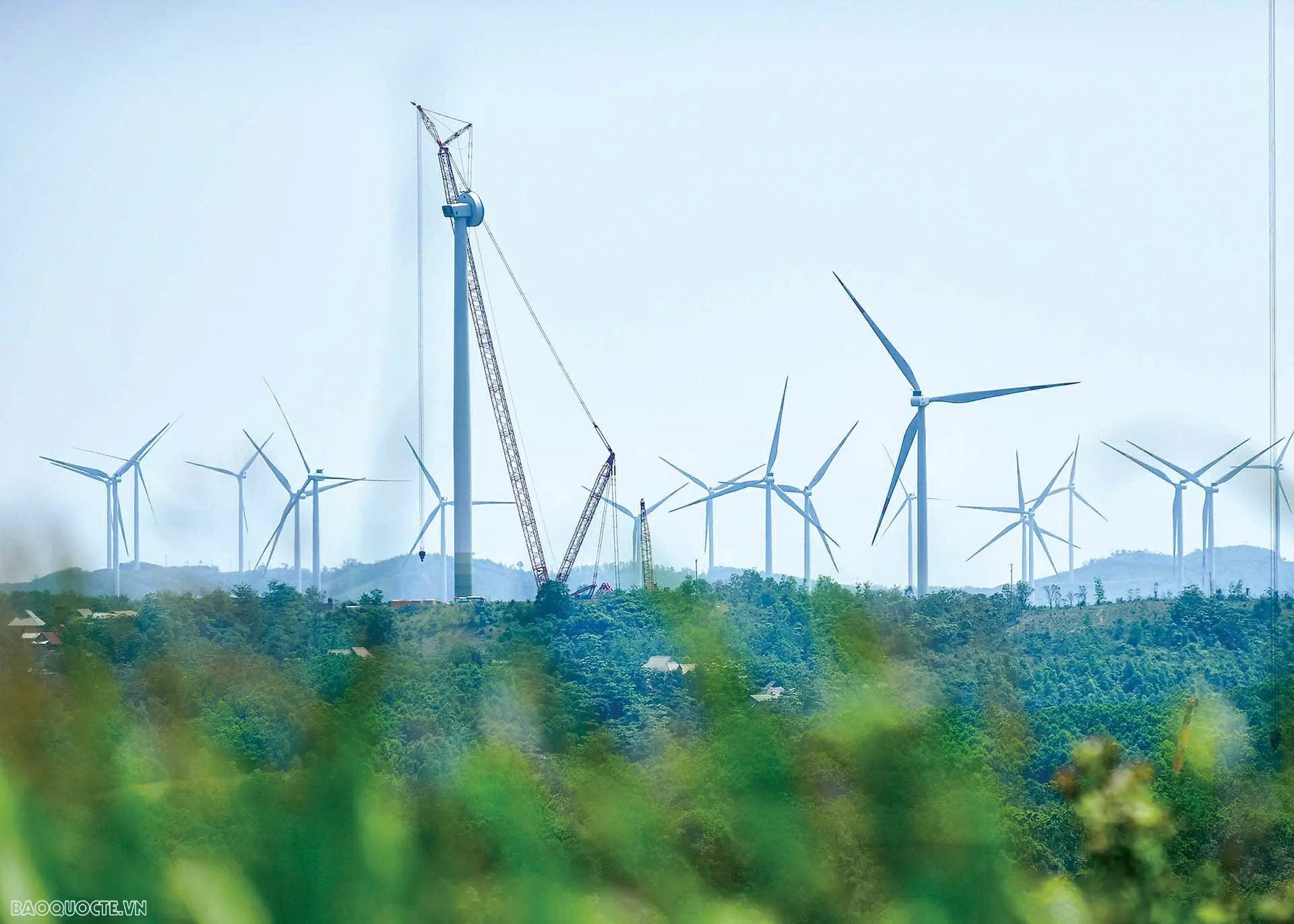 |
| Wind power system in Quang Tri. (Photo: Nguyen Hong) |
The dual transition is expected to help Vietnam attract more FDI. What do you think about that?
Vietnam has always been an attractive destination for FDI, primarily due to its competitive cost, stable and consistent government support, large number of FTAs in place and the work ethic of the Vietnamese.
Over the past decade, it has transformed itself into a production base for tech giants like Samsung, Apple, Google, LG and so on. In Jan and Feb 2025, the total registered FDI reached a record high USD 6.9 billion, marking a remarkable 35.5% y-o-y increase despite the global uncertainty, proving that Viet Nam continues to be a magnet to foreign investment.
More importantly, since 2019, FDI inflows have concentrated more on high tech and green sectors due to the Politburo’s Resolution 50-NQ/TW on orientations for completing institutions and policies, and improving the quality and efficiency of foreign investment cooperation by 2030. We have seen more tech giants like Amkor, Hana Micron, Luxshare, Quanta, etc. Investing substantially in Vietnam, helping the country move up the value chain. In late 2024, NVIDIA’s founder Jensen Huang even mentioned Vietnam as NVIDIA’s ‘second home’, highlighting its many strengths including being the world’s second largest supplier of software engineers.
In the green space, according to HSBC Global Research, Vietnam ranks highest as an investment destination for renewables in ASEAN owing to a number of factors including resource availability, power demand growth and the government’s ambitious net-zero target by 2050, as well as renewables targets in absolute terms.
According to data from the United Nations Conference on Trade and Development (UNCTAD), Vietnam ranked second among the top five developing economies attracting the most FDI in renewable energy between 2015 and 2022, at approximately USD 106.8 billion. However, data from the Mekong Infrastructure Tracker shows that 58% of renewable energy projects in Vietnam were developed entirely by Vietnamese companies. Another 27% were developed by a Vietnamese company with an international partner and 12% (or 13 projects) were developed without a Vietnamese project partner. This represents a huge untapped potential for FDI in renewables for Viet Nam.
Vietnam’s dual transition should be a key driver to help the economy lure more tech and green FDI and put it in a better position to prioritise high quality projects in these sectors, ultimately contributing to its sustainable growth.
In order to achieve this goal, the country should consider the quality and accessibility to labour and the ongoing need to improve their productivity as Vietnam moves up the quality curve. Moreover, Vietnam’s logistics performance index also lags behind China, Malaysia and Thailand with gaps shown in logistics capacity, delivery time, traceability etc. Logistics infrastructure currently falls short of meeting the expected international standards and road transport commands a 74% share of overall transport means while the demand is actually skewed towards sea transport and port space that supports the export story from Vietnam.
Besides, Vietnam will need more cutting-edge facilities and hi-tech parks, providing top-notch R&D centres, advanced labs and incubation spaces that cater to the specific needs of technology companies.
Last but not least, regulatory navigation continues to be a critical consideration for investors looking to invest into Vietnam. According to the latest HSBC Global Connections survey, regulatory developments are among the top two challenges for foreign firms operating in Vietnam. 30% of surveyed companies pointed to the challenge of adapting to fast-changing regulations and policies within the market. A more consistent and easy to comprehend regulatory framework would be a positive step in attracting new parties to invest into the market.
We can learn much from Singapore’s success story. One of the top factors is Singapore’s efficient and business-friendly environment, is evidenced by the seamless administrative procedures and processes. Its other attractive incentive policies include a tax incentive regime and Tech.Pass visas that are also key enablers for attracting foreign investors into the digital sector.
On the journey of dual transition, how do you assess the challenges that Vietnam faces? Any recommendations for Vietnam to overcome?
Vietnam's journey still faces many challenges. First and foremost, how to enhance the understanding of digital transformation in Vietnam. This should be considered one of the top priorities in the coming time. What is encouraging is that the Government's National Digital Transformation Program for 2025, with a vision towards 2030, has shown efforts to create favorable conditions for the digital transformation of the economy.
The green transitions require enormous investments, in which finance will play a critical role. Vietnam needs approximately USD 400 billion by 2040 (nearly 6.8% of its annual GDP) to tackle climate change, according to Department of Climate Change (MONRE). However, its state budget for fighting climate change can provide about USD 130 billion, less than half of what is needed. Further improve the legal framework and regulations relating to sustainable development, especially via environmental tax and favourable conditions can help encourage more investment into this space.
One of the main challenges that hold the investment back is the lack of a detailed taxonomy, especially to define ‘sustainable’ and ‘green’. No clear regulation also leads to hesitation to proceed large sustainability projects that require a complex financing process.
ESG disclosure is also an existing challenge worth mentioning. Over 90% of Vietnamese companies are small and medium enterprises, however, only listed companies are required to provide ESG performance and strategy in their annual report. Even so, most of the provided information is basic without third-party verification, except for a modest number of companies with international certificates. Investors might not be able to rely on this to rate the company’s ESG level. Therefore, they lose confidence to invest.
At the same time, the current general sustainability standards for Vietnamese corporates also create challenges for financing. Since the country’s official standards are not available yet or set for future implementation, financial institutions like HSBC have to follow international standards with adaptation to fit the current level of the market. Still, these standards might be too advanced for most firms, which prevents them from accessing sustainable financing.
Finally, Vietnam needs to continue focusing on investing in infrastructure, as this is a crucial foundation for economic growth and attracting FDI. The government is committed to promoting public investment, focusing on many strategic infrastructure projects that connect economic centers. This will be an important launchpad for Vietnam to enter the era of national rise.
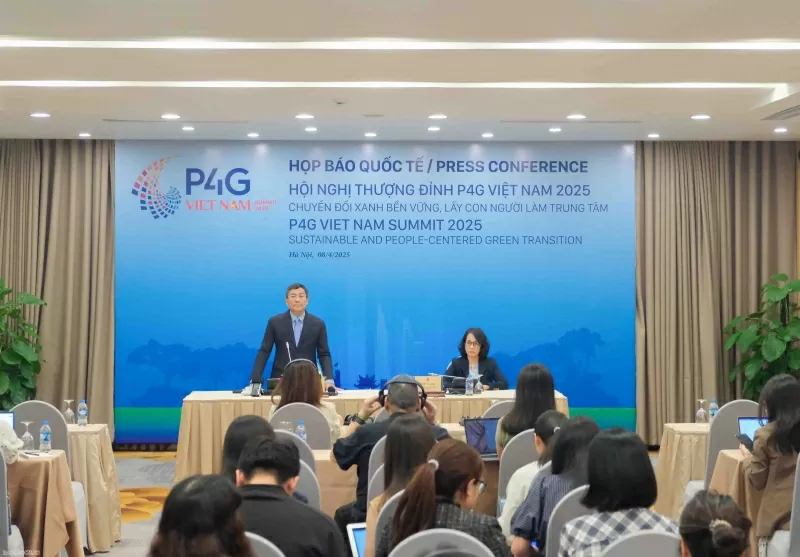 |
| Standing Deputy Minister of Foreign Affairs Nguyen Minh Vu chairs the international press conference on the P4G Summit Vietnam 2025. (Photo: Nguyen Hong) |
P4G is an important forum where developing countries can explore international resources towards green transition, inclusion, sustainability and innovation. This year, Vietnam will host the P4G Summit. How can Vietnam leverage this event to boost cooperation, collaborating with members and move towards a greener future?
First of all, hosting a high-profile event like P4G Summit is a testament to Vietnam’s commitment to join hands with international community in tackling global challenges including climate change. This will significantly enhance the country's global recognition and help Viet Nam make its mark on the international stage. The event is another firm step of the government in elevating the country’s stature and influence.
Second, P4G Summit gathers global leaders, experts and influential stakeholders from businesses and civil society to share insights, showcase innovations and develop actionable strategies that support innovation and entrepreneurship, accelerate global climate finance and deliver country level climate transitions. This is a significant opportunity for Vietnam to gain knowledge and experience while raising its voice to get international support in its green transition.
As an active member of P4G, Vietnam has received funding from the organisation in 12 partnerships to support its commitment to green growth. For example, P4G provided USD 650,000 in grant funding to help Vietnam and Indonesia automate the grid for easier access to renewable energy, such as rooftop solar.
As finance remains one of the key challenges in Vietnam’s net zero transition, this event is a huge opportunity for the country to mobilize external resources.
Thank you very much!
| Vietnam will host the 4th Partnership for Green Growth and the Global Goals 2030 Summit in 2025 (the P4G Vietnam Summit 2025), under the theme “Sustainable and People-Centered Green Transition”, in Hanoi from April 14-17. The event is expected to be chaired by Prime Minister Pham Minh Chinh, with a scale of welcoming about 800-1,000 domestic and international delegates. In addition to leaders of the Government, ministries, central and local departments, and large enterprises of Vietnam, the conference welcomes senior leaders of P4G member countries and international organizations that are partners of P4G. Representatives of leaders from countries, international organizations, corporations, enterprises, financial funds, large investments of the Government and private sector in the fields of growth, green transformation, and climate change also attend the conference. |







